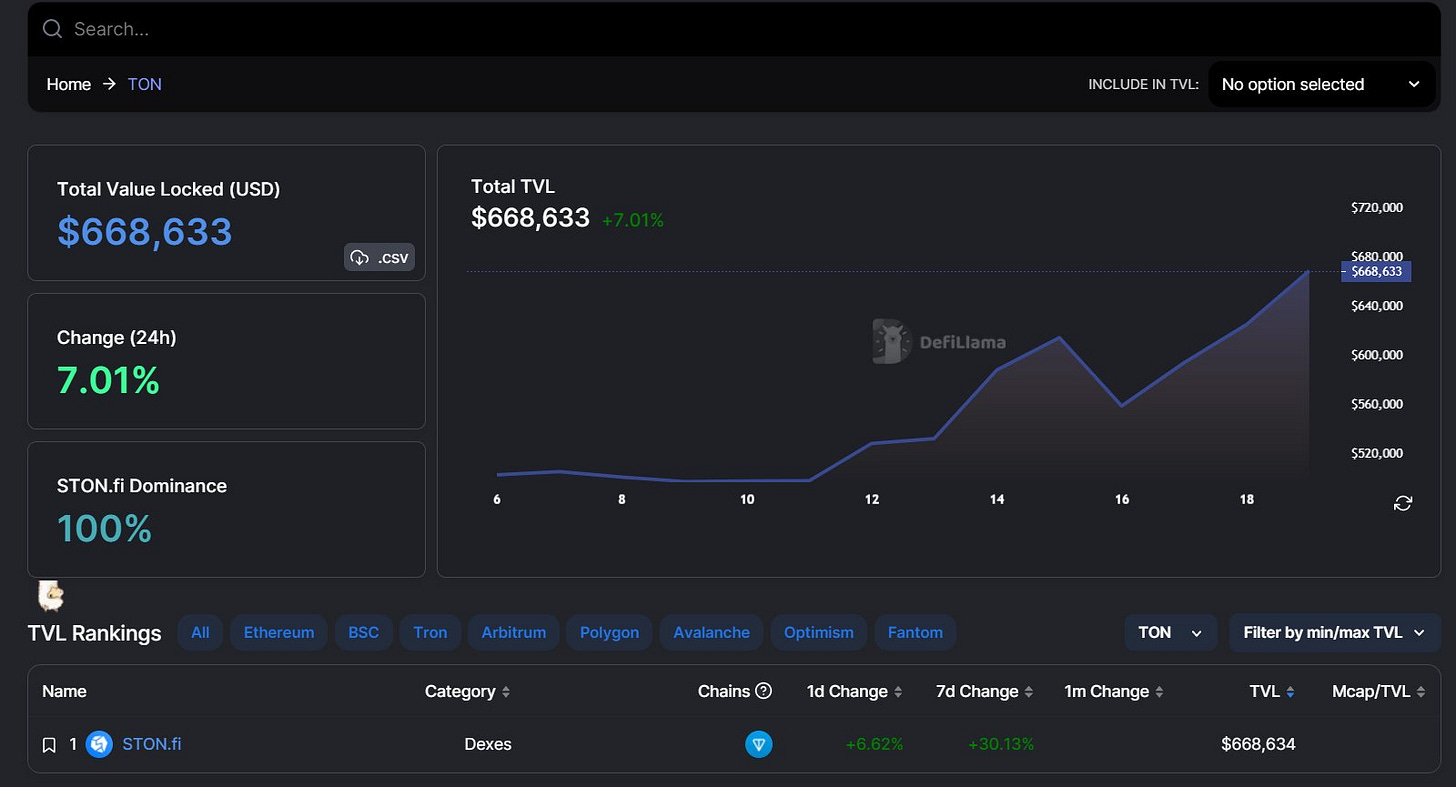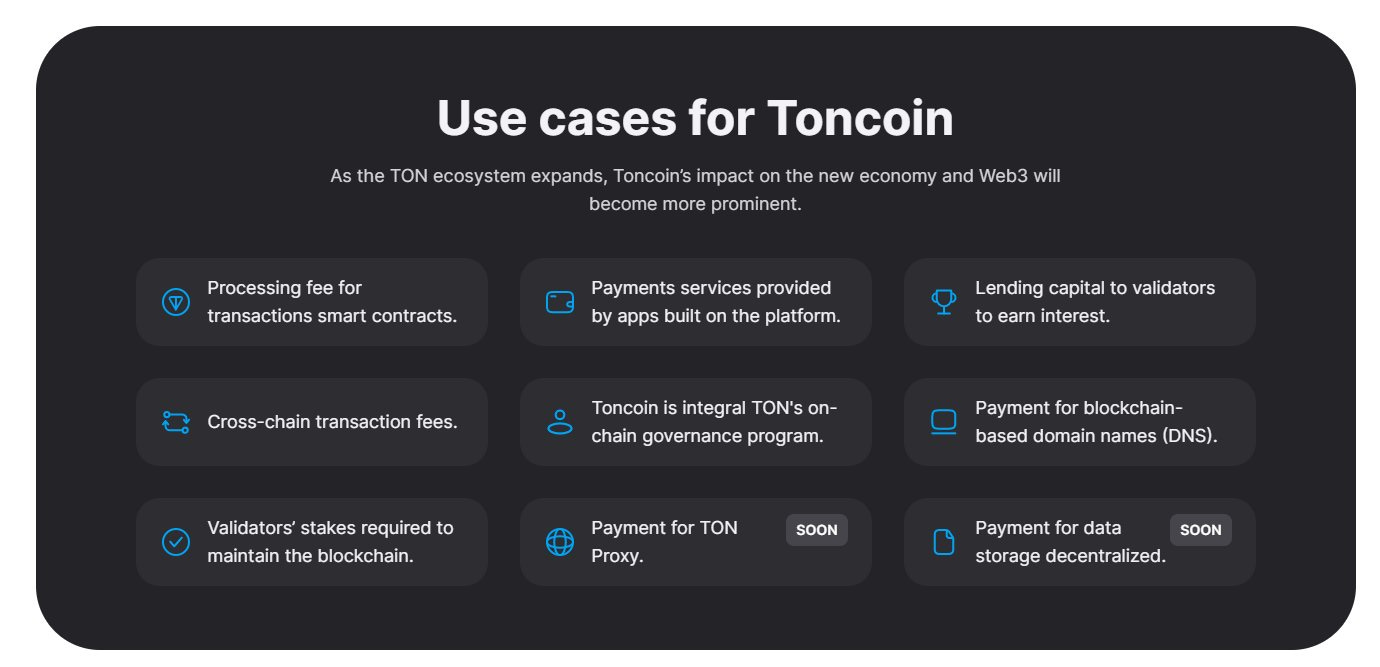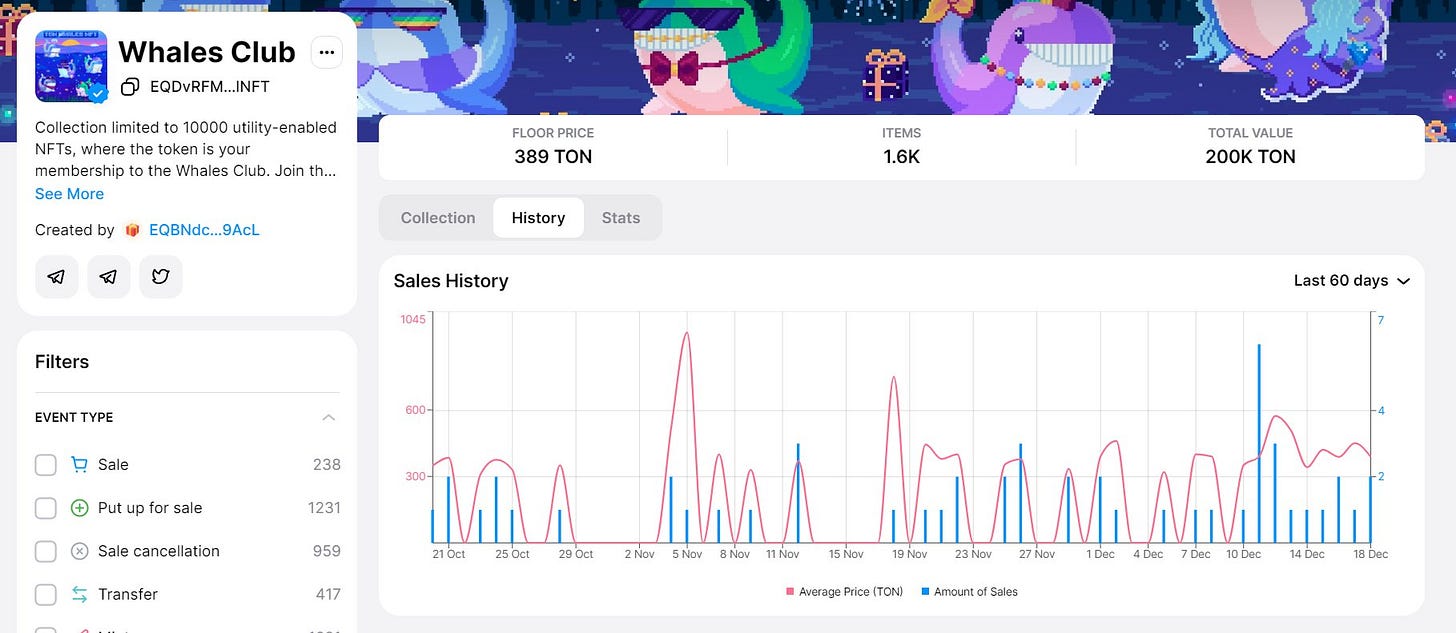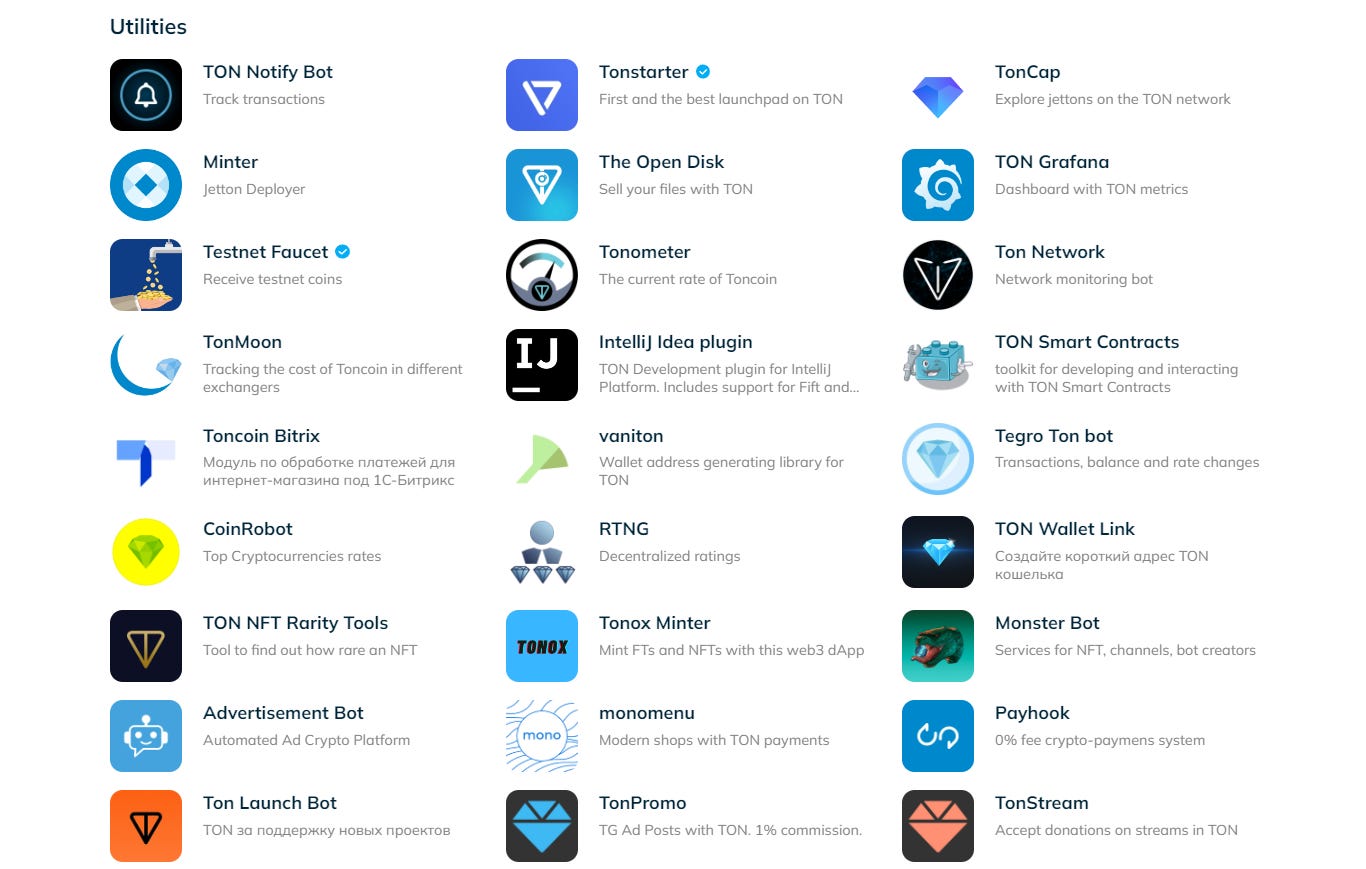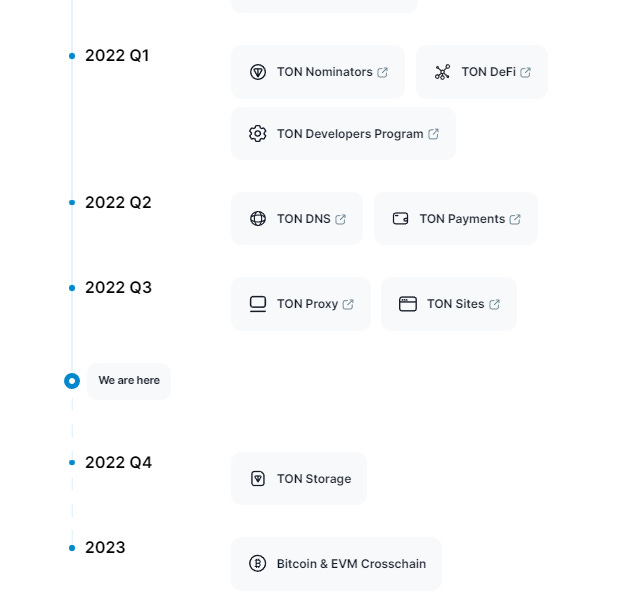A Deep Dive into $TON
The Open Network is L1 project launched by Telegram in 2018. Here you will read the ins and outs, everything you need to know about it. Right now $TON is trading at $2.17, w/a daily volume of 36 mil.
General Description
The Open Network is a fully decentralized layer-1 blockchain designed by Telegram messenger to onboard billions of users. It boasts ultra-fast transactions, tiny fees, easy-to-use apps, and is environmentally friendly.
$TON is the main currency of the chain and is primarily used for transaction fees as well as deposits for validators to secure the network. $TON is unique as it’s one of only a few cryptocurrencies that has operated as both PoW & PoS. In May 2020, the project nearly died as the team ceased development and agreed to an $18.5m settlement with the SEC regulators. In order to move on, the team put all the available coins of the network into smart contracts, which anyone could mine on equal terms. The initial distribution of the $TON coin was almost accidental and is now labelled as IPoW- Initial Proof of Work. Now the chain has fully transitioned to proof of stake and is gaining more traction, growing around 40% in price in the last month.
Tokenomics
Coingecko supply stats (19/12/22)
Circulating supply = 1.47b
Total supply = 5.06b
Market cap = $4.1b
FDV = $14.07b
Market cap/ FDV = 0.29
The initial supply of $TON was 5 billion coins. Supply is not capped and will inflate at approximately 0.6% per year. so relatively low. The created tokens are used to reward validators for keeping the network secure. You can currently earn about 8.2% APY for staking. If validators misbehave, then part or all of their stake can be slashed and equivalent TON burned. In turn, decreasing the supply of TON in circulation.
What does $TON do?
To completely understand the advantages and disadvantages of TON, we will be looking multiple topics: The technical aspects, the services and apps provided, and its community along with adoption. We will also discuss what is generating revenue towards TON.
The Technical Aspects
TON values itself on being scalable and shardable. Its PoS architecture is flexible and efficient in performance, due to its cross-shard interactions and async nature. We can see TON’s block time e.g. is faster than ETH 2.0, with a similar time to finalize transactions as Solana.
Lots of crypto are not without problems. ETH and Bitcoin both suffer from high transaction fees and slow transaction speeds. In the high of the bullmarket, we’ve even seen ETH transaction fees go up to $200 plus. TON tackles these. Unlike Bitcoin and Ethereum, which are primarily used by investors, TON focuses on catering to the typical consumer. It’s designed to be integrated into an easy-to-use app, allowing users to quickly buy, send and store coins. With aspects as dynamic sharding and workchains, TON can successfully validate and process millions of transactions per second. Impressively, TON blockchain has already processed nearly 100 million transactions with over 1.7 million unique accounts- Increased with 211% in the last 6 months.
TON offers a quantity of features:
TON Storage: Think of DropBox or TerraBox. Users can store information, but with benefits of private encryption, using the owner’s wallet’s private key.
Ton Proxy: TON Proxy enables users to access the TON blockchain using decentralized VPNs and TOR-like networks. This allows users to avoid censorship and easily access DApps.
Ton Validators: TON validators help to maintain the network by validating transactions. As they validate blocks, they receive Toncoin rewards using the blockchain’s PoS consensus algorithm.
Ton DNS: TON DNS, or TON domain name service, attempts to make cryptocurrency wallets, accounts, smart contracts and other features a little more user-friendly.
Ton payment methods: Because of the TON network’s sharding feature, the token may also be used for cross-chain transaction fees or as payment for creating new work chains.
Find more information here: https://ton.org/docs/learn/overviews/ton-blockchain
Validators
$TON uses the Proof of Stake (PoS) consensus model. Consensus is maintained by validators - network participants who check the validity of blocks. Anyone can become a validator and earn Toncoin while contributing to network security.
Becoming a TON network validator requires access to quality hardware on a highly available network, as well as access to a large amount of coins as a stake.
Validators stake Toncoin for a fixed specific term, and the stake is refunded with interest after the completion of a validation round. Open-source software is available for those that wish to become validators. Should a validator attempt to cheat or be unavailable during a validation round, its stake is partially or fully forfeited as a penalty. Network validators verify user transactions. If all validators reach consensus that a transaction is valid, it is included in the blockchain. Invalid transactions are rejected. Therefore, validators have to correctly process user transactions at maximum speed to get rewarded and avoid penalties.
We can see a clear example of game theory here. The PoS consensus model encourages validators to stake $TON, both benefitting the network and the validator, which is good for the chain itself.
Ecosystem and Apps
TON's ecosystem is fairly new, and being build as we speak. However, there are many tools already available today. For example:
Wallets: https://ton.org/en/wallets and https://t.me/wallet
Bridge: https://ton.org/bridge/
Domains: https://dns.ton.org/
Usernames and numbers: https://fragment.com/
DEX: https://tonswap.org and https://app.ston.fi/swap
NFTs like the Whale Club NFTs.
There’s way too many to name, so i’d suggest you to browse ton.app and discover for yourself. Of course, the ecosystem is still growing and has a lack of volume, but that means it as an early opportunity to investigate.
Adoption
TONCOIN has a huge chance and potential on adoption. A major advantage for TON is the potential it has to be massively adopted. With Telegram, a messenger app with over 500 million users, pushing TON coin and actively integrating its blockchain on the app: the token will be exposed to a massive amount of active people.
Conclusion and final thoughts..
So we can see that $TON and The Open Network has large advantages. As of 2022, the $TON blockchain remains one of the few truly scalable blockchain projects, with a chance of massive adoption. It is fairly new though, so could potentially stay behind with other chains that already have built a community. Maybe people won’t want to migrate to yet another blockchain. Only the future can tell.




